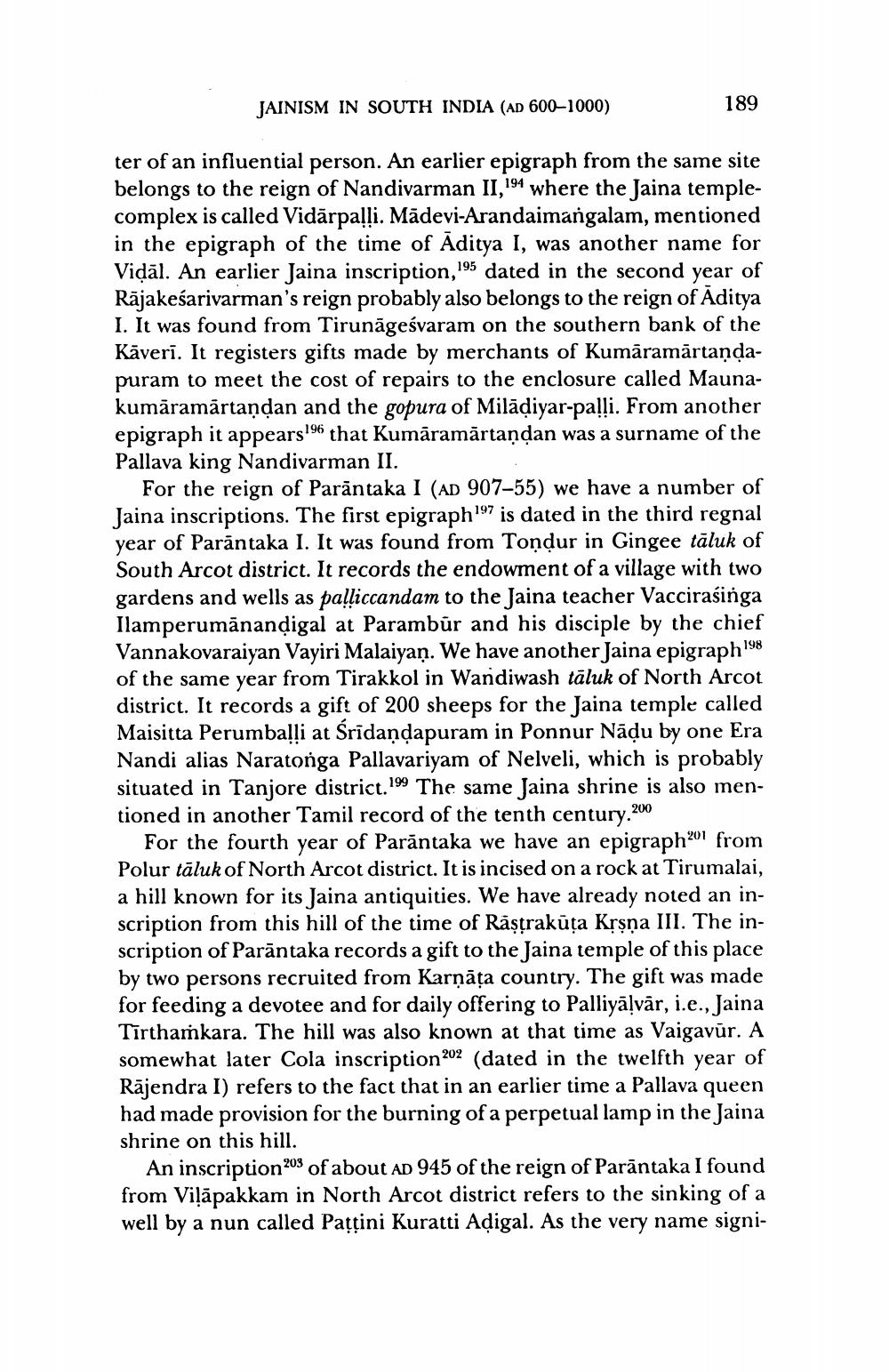________________
JAINISM IN SOUTH INDIA (AD 600-1000)
189
an il.
ter of an influential person. An earlier epigraph from the same site belongs to the reign of Nandivarman II, 194 where the Jaina templecomplex is called Vidārpaļļi. Mādevi-Arandaimangalam, mentioned in the epigraph of the time of Aditya I, was another name for Vidāl. An earlier Jaina inscription,195 dated in the second year of Rājakeśarivarman's reign probably also belongs to the reign of Aditya I. It was found from Tirunāgeśvaram on the southern bank of the Kāverī. It registers gifts made by merchants of Kumāramārtandapuram to meet the cost of repairs to the enclosure called Maunakumāramārtandan and the gopura of Milādiyar-palli. From another epigraph it appears 194 that Kumāramārtaņdan was a surname of the Pallava king Nandivarman II.
For the reign of Parantaka I (AD 907-55) we have a number of Jaina inscriptions. The first epigraph 197 is dated in the third regnal year of Parāntaka I. It was found from Toņdur in Gingee tāluk of South Arcot district. It records the endowment of a village with two gardens and wells as paļļiccandam to the Jaina teacher Vaccirasinga Ilamperumānandigal at Parambūr and his disciple by the chief Vannakovaraiyan Vayiri Malaiyan. We have another Jaina epigraph 198 of the same year from Tirakkol in Wandiwash taluk of North Arcot district. It records a gift of 200 sheeps for the Jaina temple called Maisitta Perumballi at Sridandapuram in Ponnur Nāļu by one Era Nandi alias Naratonga Pallavariyam of Nelveli, which is probably situated in Tanjore district.199 The same Jaina shrine is also mentioned in another Tamil record of the tenth century.200
For the fourth year of Parāntaka we have an epigraph201 from Polur tāluk of North Arcot district. It is incised on a rock at Tirumalai, a hill known for its Jaina antiquities. We have already noted an inscription from this hill of the time of Rășțrakūta Krsna III. The inscription of Parāntaka records a gift to the Jaina temple of this place by two persons recruited from Karņāța country. The gift was made for feeding a devotee and for daily offering to Palliyāļvār, i.e., Jaina Tīrthamkara. The hill was also known at that time as Vaigavūr. A somewhat later Cola inscription 202 (dated in the twelfth year of Rajendra I) refers to the fact that in an earlier time a Pallava queen had made provision for the burning of a perpetual lamp in the Jaina shrine on this hill.
An inscription 208 of about AD 945 of the reign of Parāntaka I found from Viläpakkam in North Arcot district refers to the sinking of a well by a nun called Pattini Kuratti Adigal. As the very name signi




